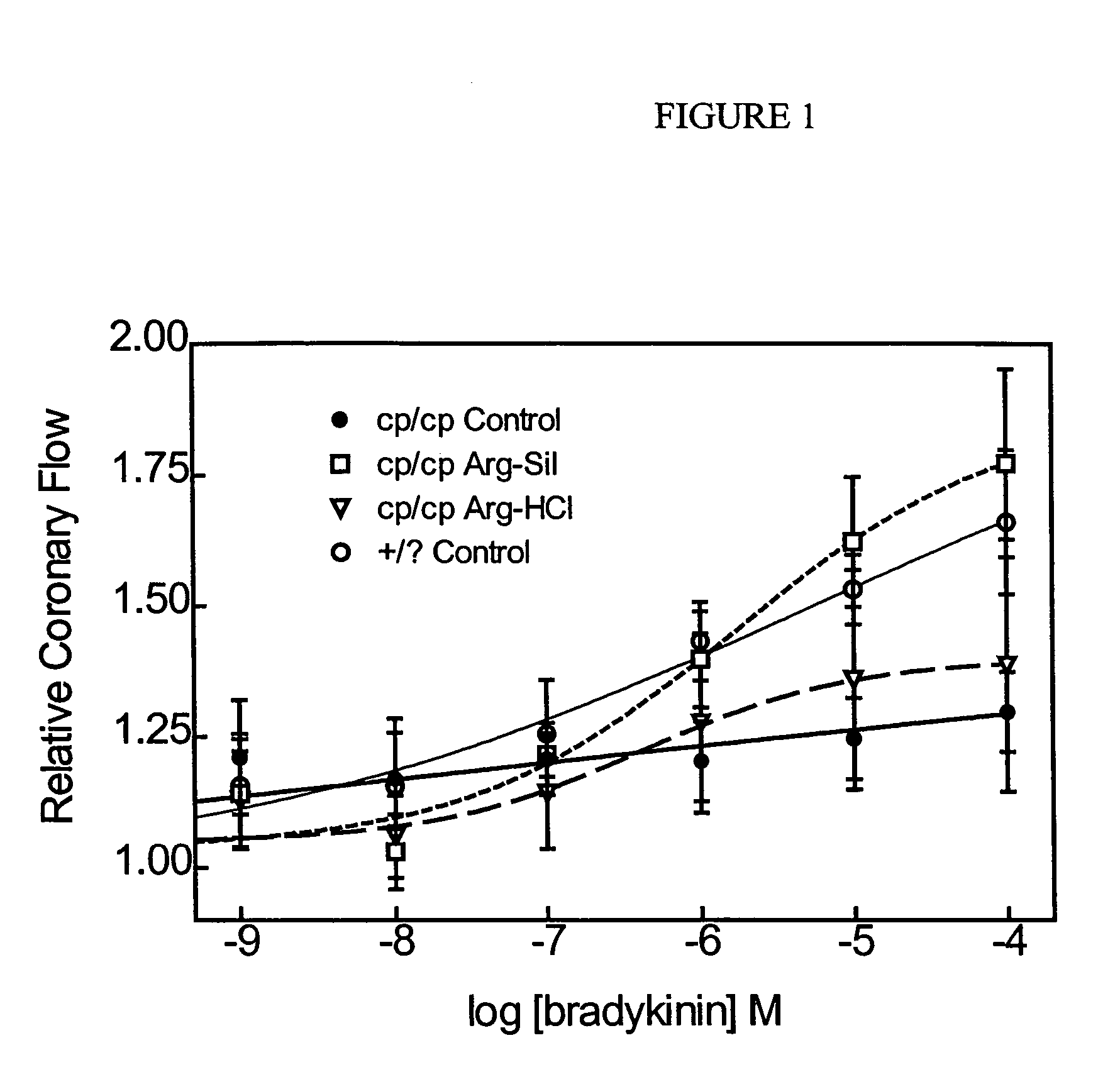Arginine silicate inositol complex and use thereof
a technology of arginine silicate and inositol, which is applied in the direction of drug compositions, peptide/protein ingredients, metabolic disorders, etc., can solve the problems of reducing the effect of inflammatory markers, and reducing the risk of damag
- Summary
- Abstract
- Description
- Claims
- Application Information
AI Technical Summary
Benefits of technology
Problems solved by technology
Method used
Image
Examples
example 1
Preparation of Arginine Silicate Inositol
[0104]Arginine (3.8 g, 21.8 mmol) was added to a vigorously stirred solution of inositol (1.25 g, 6.9 mmol) in potassium silicate [5 ml, 29.8° Be, 8.3% K2O (0.52 g, 5.5 mmol), 20.8% SiO2 (1.3 g, 21.8 mmol)], resulting in a highly viscous suspension. The suspension was heated to 95° C. Heating and stirring were discontinued when the mixture became clear and started to form a gel. The mixture was left overnight at room temperature and allowed to crystallize. The resulting crystal bulk was dispersed, mixed with ethanol (5 ml) and left for 30 minutes. This procedure was repeated with another 5 ml ethanol on the resulting crystals and left overnight to complete crystallization. The final arginine silicate inositol product was collected by filtration, washed with ethanol and dried under vacuum. The amount of product was 7.7 g obtained as a hydrate (111% of the total mass of the used reagents.
[0105]An analytical sample kept under vacuum at 90° C. fo...
example 2
Kinetics of Arginine Silicate Inositol Product
[0106]Studies of the kinetics in aqueous solution of the arginine silicate product indicated the formation of non-dissociable arginine silicate complex as a function of used concentration. Measurement of the ratio of dissociated to non-dissociated forms of arginine silicate was performed using a HACH kit (Catalog No. 24296-00) in which the absorbance at 452 nm is a function of the concentration of silicomolybdate formed under acid conditions and expressed as % of silica (SiO2). An aqueous solution of arginine silicate product (10 g / l) was diluted at the appropriate time to 0.5 g / L and the content of silica was measured using the HACH method. The level of silica at time 0 was 17.5%; at 1 hour was 11.8%; at 2 hours was 10.8%; and at 24 hours was 9.2%. In an aqueous solution of 0.5 g / l arginine silicate, the level of silica was 17.5% and was stable after 24 hours, confirming the solubility of the product.
example 3
Bioavailability of Arginine Silicate Inositol
[0107]A solution (8 g / l) of arginine silicate was prepared and, after donating a baseline 24-hour urine, a human volunteer consumed three one-cup servings daily for three days. On the third day, he once again obtained a 24-hour urine. Silicon assay revealed that urinary silicon output has increased more than tenfold from baseline. The amount of silicon in the third-day urine corresponded to approximately 25% of the silicon-ingested daily from the arginine silicate solution. This demonstrated improved bioavailability of the silicon in solubilized arginine silicate.
PUM
| Property | Measurement | Unit |
|---|---|---|
| weights | aaaaa | aaaaa |
| total mass | aaaaa | aaaaa |
| solubility | aaaaa | aaaaa |
Abstract
Description
Claims
Application Information
 Login to View More
Login to View More - R&D
- Intellectual Property
- Life Sciences
- Materials
- Tech Scout
- Unparalleled Data Quality
- Higher Quality Content
- 60% Fewer Hallucinations
Browse by: Latest US Patents, China's latest patents, Technical Efficacy Thesaurus, Application Domain, Technology Topic, Popular Technical Reports.
© 2025 PatSnap. All rights reserved.Legal|Privacy policy|Modern Slavery Act Transparency Statement|Sitemap|About US| Contact US: help@patsnap.com

